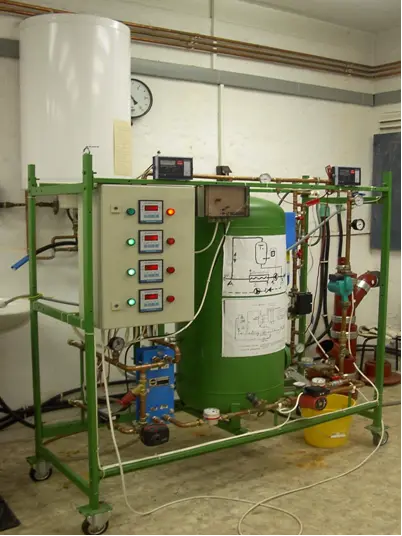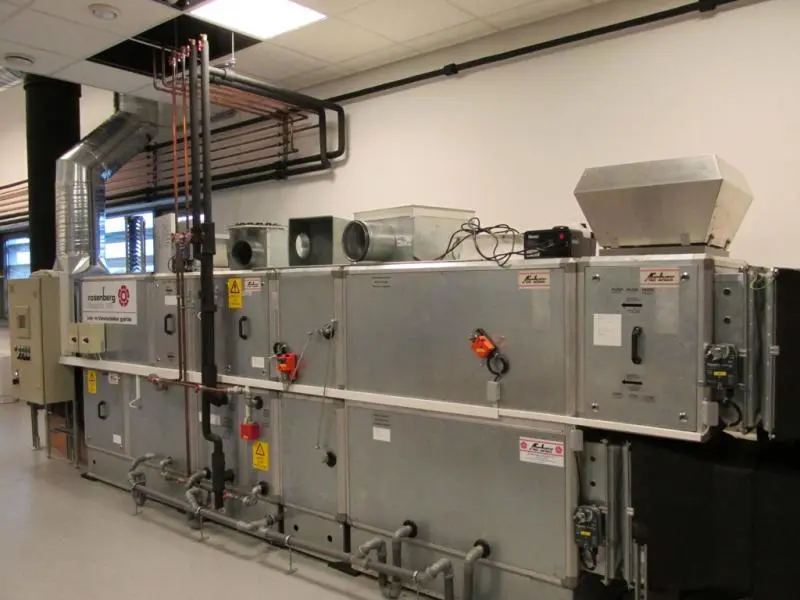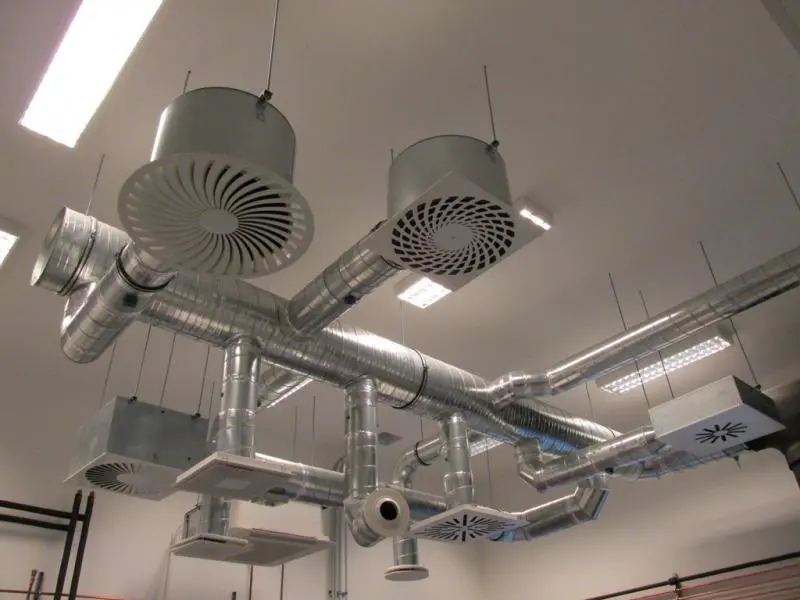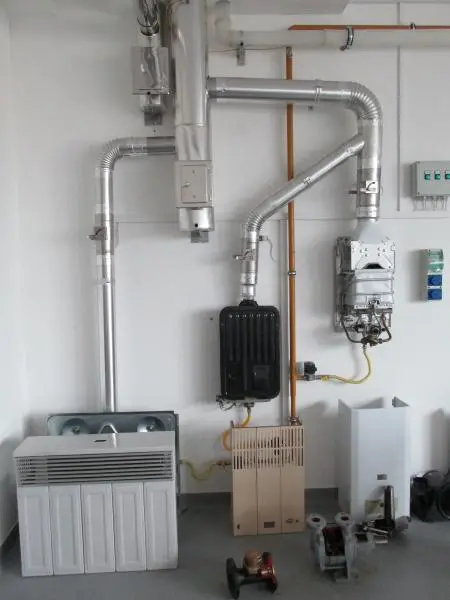Building Physics Laboratory
In this laboratory students can investigate the thermal properties of insulation and building materials through laboratory measurements. They can get familiar with the thermal behaviour of these materials. Four different types of measurements can be made here:
1. Thermal conductivity measurements
To measure the thermal conductivity of insulating samples a device, called Holometrix Lambda 2000 is used. This equipment is designed to determine the thermal conductivity of insulation materials which have dimension of 30 cm x 30 cm x 1 to 10 cm (LxWxH/Thickness).
2. Measuring sorption isotherms
Before treating the samples in the CLC climatic chamber, samples are always dried to changeless weight at 343 K under normal atmospheric pressure. This temperature is chosen because it is fairly under the melting point of the polystyrene (about 373 K). Apart from that, during dehydrating process at this temperature the material does not suffer losses in its physical and chemical properties. To determine the moisture content samples have been kept in the CLC chamber in conditions of relative air-humidity (RH % at 293 K).
3. Thermal resistivity measurement of wall structures
Two HFP01 Hukseflux heat flux sensors serve the purpose to measure the heat flux that flows through the object in which it is incorporated or on which it is mounted. These instruments can measure the heat flux and air temperature, so the R-value of building envelopes can be calculated according to ISO 9869, ASTM C1046 and ASTM C1155 standards. The apparatus (which contains these two sensors above mentioned) can be used from 250 K to 350 K temperature range and from 2000 to -2000 W/m2 with about 5% accuracy. These two HF sensors, with rounded surface of 50,24 cm, are fixed up at different points on the wall to provide good spatial averaging.
4. Measuring the calorific value of building materials with CAL2 ECO calorimeter
Bomb calorimetry is a procedure which determines the heat of combustion or calorific value of solid and liquid materials which are burned. It is a primary test of great importance to: coal production, power stations, fuel analysis, animal feed research, educational institutes, commercial analytical laboratories, by-product analysis, building materials sector, etc. The CV (Calorific Value) of a substance is measured by burning it in a controlled environment. The resulting heat released by this combustion, i.e. the net temperature rise is proportional to the calorific value.
 Water Supply Laboratory
Water Supply Laboratory
In this laboratory the following experiments can be conducted:
1. Examination of water meter:
The aim of the examination is to determine the interrelation between functions and measurement values and representation by graphical methods, furthermore the initial sensitivity of different sized and aged water gauges.
2. Examination of the function parameters of domestic water-pipe distribution system mains and risers equipment,
3. Investigation of the flow dynamics of rotational meters, calibration,
4. Examination of the temperature distribution in a domestic hot-water tank.
Ventilation and Air-Conditioning Laboratory
Nowadays closed spaces are artificially supplied by fresh air. Therefore researchers at the Faculty lay great emphasis on transmitting knowledge which describes the improvement of the person’s comfort and energy efficiency feeling in a building with well-controlled air technology systems.
Comfort
Thermal comfort, analysed under laboratory conditions, is an important factor. Comfort involves primarily maintaining appropriate air temperature and air velocity.
Energy Efficiency
In the ventilation laboratory we use different building systems, for example heat pump systems or recirculation systems. Air-conditioning, air supply and air exhaustion in buildings consume sizeable quantities of energy. In order to reduce these energy costs in buildings, we use heat exchanger in the laboratory.
Instruments
Portable multifunctional measuring instrument (KIMO AMI 300), Air-flow measuring instrument (KIMO DBM 700, KIMO K75 air-flow cone).
Data collectors: Temperature and humidity sensors (Testo Saveris systems), CO2 measuring instrument (Testo 435), Portable tachometer with optical and contact sensor adapter, Infra thermometer with gauge field, Pressure gauge instruments with inner sensor, Blower Door.


Heating System Laboratory
Characteristics of different types of circulation pumps in operation can be analysed.
Heat-supply control methods of heating loops as well as features of a solar collector system can be examined.
Devices: pump-characteristic curve measuring instrument, measurement bench investigating static and dynamic balancing methods, measurement bench for heat pump, radiators, thermostatic valves, etc.
Gas Supply Laboratory
In this demonstration room the presentation of the structural parts of different gas apparatuses can be found. Performance consumption measurements can be made on the equipment available and flue-gas composition can also be examined.
